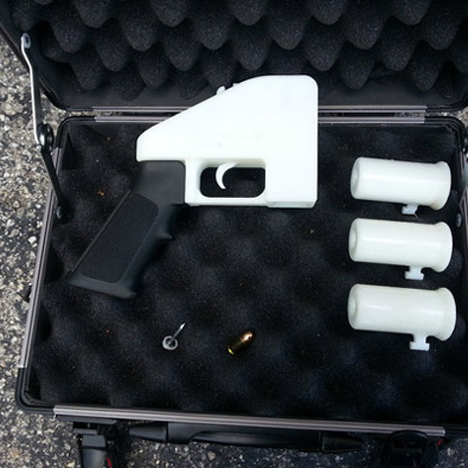News: police in Germany plan to 3D print a gun to test whether the weapon can pass through security checks undetected.
According to a report on GigaOM, police officers have bought a 3D printer and will also explore whether printed weapons could be used by the police themselves.
The news emerged in response to a question posed in parliament by Die Linke (The Left Party), the technology website reported.
"The government said the police wanted to see whether ne’er-do-wells could actually make plastic guns that could be smuggled onto planes, and also whether the police might find a use for such technology themselves," GigaOM said.
The news follows reports that Australian police downloaded and 3D printed their own handgun earlier this year, using materials worth $35. Officers in the Australian state of New South Wales found that the gun fired a bullet 17 centimetres into a standard firing block, but it exploded when it was discharged.
New South Wales police commissioner Andrew Scipione made the announcement at a press conference on 24 May and warned the public about the threat posed by 3D printed weaponry.
"Make no mistake, not only are these things undetectable, untraceable, cheap and easy to make, but they will kill," said Scipione at the time. Here's the full speech:
3D printed guns have been making headlines since May 2013, when Cody Wilson, founder of Texas-based Defence Distributed made the CAD designs of a 3D printable handgun available online. The blueprints for the gun, called Liberator, were downloaded over 100,000 times in the two days after they were uploaded to the organisation's website.
Two days after the first 3D printed plastic gun was successfully fired in Texas, the US Department of Defense Trade Controls removed the files from online public access.
In October last year, open-source design expert Ronen Kadushin warned Dezeen that affordable 3D printers could one day "print ammunition for an army". He added: "This is a very, very dangerous situation."
Dezeen has reported on the rise of 3D-printed weaponry in our print-on-demand publication Print Shift, which also looks at how the technology is being adapted to architecture, design, food, fashion and other fields.
See all our stories about 3D printing »

